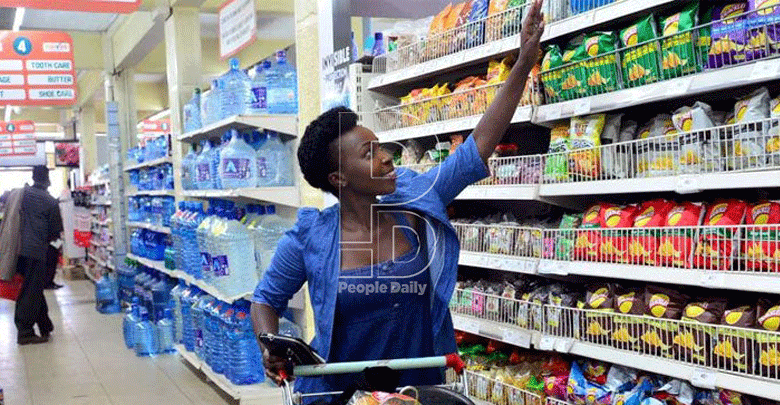Tough times as prices of basic goods, services rise
By Jacktone Lawi and Herald Aloo, March 2, 2022High cost of living has forced most Kenyans to abandon what they consider luxury to shore up reserves to meet basic needs. Increase in prices of goods comes even as Kenya National Bureau of Statistics (KNBS) indicates that the cost of living has remained relatively flat in the last two months.
In the latest Kenya National Bureau of Statistics (KNBS) data, the Consumer Price Index (CPI), which measures the price change percentage of a basket of basic commodities consumed, increased by 0.40 per cent to 119.115 in February, up from 118.642 in January 2022.
“This was mainly due to an increase in prices of commodities under; food and non-alcoholic beverages (8.69 per cent); furnishings, household equipment and routine household maintenance (5.41 per cent); housing, water, electricity, gas and other fuels (4.79 per cent); and transport (4.45 per cent),” it stated.
In a forward looking report, however, the International Monetary Fund estimated that inflation in Kenya is expected to average 5.9 per cent this year on surge in cost of food, which are expected to increase at a more moderate pace of about 4.5 per cent in 2022 and decline in 2023.
The report which was released before an international diplomatic and economic explosion resulting from the invasion of Ukraine by Russia saw experts warn that taxes on goods such as cooking gas, fuel and food on a weakening shilling and global logistic snarl ups.
In Nairobi, about 50 per cent of the residents spend their income on food alone, 30 per cent on rent then the rest is left to pay school fees, transport, emergency and debt.
Speaking to Business Hub, Steven Biko, financial analyst and entrepreneur said the challenge with Kenya’s cost of living is in the way tax code is framed whereby costs are eventually spiked due to the effects of taxes.
“Because of the high taxes that Kenyans actually pay, we’ve seen high cost of energy, high cost of fuel, high cost of production, and high cost of inputs which means higher cost of the output,” he said.
“Many families are now not able to put food on the table, this is because prices of commodities like maize four, cooking oil are high,” Biko added.
Naivas Chief Commercial Officer, Willy Kimani agrees, adding that despite shopping trends of Kenyans beginning to mirror the pre-Covid era patterns, there has been a fall in average basket of goods per customer.
Shopping times
“The reality is prices are going up due to supply issues. We are starting to see the pre-Covid tendencies. People are reducing their shopping times to two-three times a month. The buckets were a bit higher, now they have started to thin out again,” he said. Kimani revealed that from an average of 12 items a bucket, Kenyans have been forced to reduce it to eight.
Gladys Ouru, a resident of Kibera Constituency who has been operating a food vending kiosk along Uhuru Highway for close to four years, says she was forced to increase the price of foodstuff last month by at least Sh10 to cope with the increase in the price of groceries.
“Chapati and Ndegu is now Sh70. I used to sell it at Sh60, Ugali and Omena used to retail for Sh70, I haven’t changed that amount but just reduced the quantity I serve my customers. That’s the only way I can make profit,” she said.
More Articles

